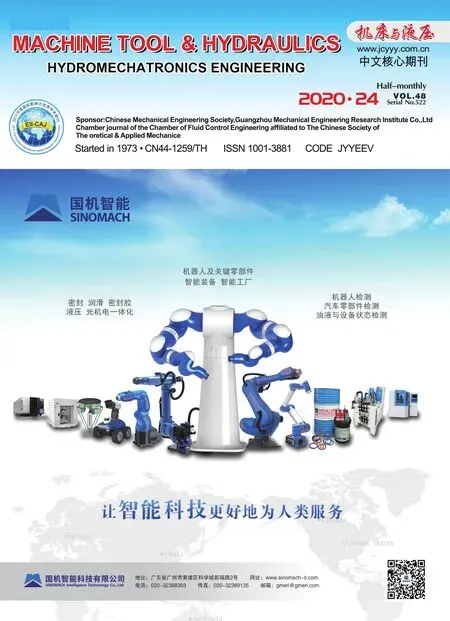Study on influence of strong crosswind with sand on aerodynamic characteristics of high speed train
A-fang JIN,Hu LI,Reyihanguli-Musha,Wei-qiang GAO
(College of Mechanical Engineering,Xinjiang University,Urumqi 830047,China)
Abstract:To study the safety and aerodynamic performance of high-speed train operation under strong wind and sand environment,based on the aerodynamic theory,the Navier-Stokes equation,andκ-εstandard turbulence model are used to calculate the continuous turbulence movement of the airflow and the DPM model has used to discretization the movement of sand particles.The Euler-Lagrange model is used to solve the example.The results show that the eddy strength of the leeward side of the train decreases with the increase of the sand-carrying wind speed.While near the ground on the leeward side,the train’s streamline becoming more and more irregular;In addition,the pressure of the train body will increase with the rising of the sand-carrying wind speed and decrease while the sand diameter get larger.When the sand-carrying wind speed increases,the drag,lateral force,and lift of the train increase together.With the increase of sand diameter,the lift force,lateral force,drag force and overturning moment of the train all decrease correspondingly,but they are larger than the net wind condition.The research results are valuable for designing high-speed railway lines in the region with severe wind and sand environments.
Key words:High-speed train,Sediment-carrying crosswind,Fluid-solid coupling,Overturning moment,Operational safety
1 Introduction
High-speed rail has become China’s diplomatic Postcard after the promotion and implementation of the“one belt,one road”.Signing high-speed rail orders with many African countries has become one of the pillars of China’s economic development[1].However,when the train at high speed,the pressure wave generated by the coupling of crosswind,exponential wind and fluctuating wind will not only threaten the safety of the crews and passengers on the train,but the station surrounding facilities as well,such as the Lanzhou Xinjiang high-speed railway that needs to pass through hundreds of kilometers of Gobi desert.Take the hundred-mile wind area and thirty-mile wind area under strong wind and sand environment as an example[2-3].In recent years,a total of 79 vehicle rollovers have occurred,of which 13 were overturned by strong winds.Therefore,it is very important to study the influence of sand-laden strong crosswind on high-speed trains in special areas;so as to effectivelyavoid such kind of occurrence of rollover events and provide a reference for optimizing train surface geometry and parameters.Therefore,the influence of strong crosswind with sand on high-speed trains in specific areas is studied,so as to effectively avoid the occurrence of rollover and provide a reference for the optimization of train surface geometry and parameters.
Nowadays,scholars at home and abroad have carried out numerous studies research on the aerodynamic characteristics of high-speed trains.The main research methods include numerical simulation,wind tunnel experiment and theoretical analysis.Professor Suzuki[4]of Japan studied the aerodynamic characteristics of trains in different environments,to find that the lateral force of the train is linear with the thickness of the bridge.Based on the Euler two-fluid model,Yue Yufei[5]analyzed the aerodynamic characteristics and the stability of high-speed trains under rain and rain conditions,the results show that the rain carrying wind will reduce the stability of the train.Professor Ren zunsong[6]has studied the safety characteristics of trains under strong wind conditions,providing a reference for the safe operation of trains under extreme conditions.Train aerodynamics,compiled by Tian Hongqi academician team[7],describes the principle and experimental methods of studying train aerodynamics,strengthens the theoretical basis of domestic train aerodynamics and provides a professional theoretical basis for relevant researchers.Professor Zhang Jiye[8]of Southwest Jiaotong University analyzed the influence of airflow at the flat bottom of high-speed trains on snow near bogies by using the separation vortex simulation method,which provides a reference for future generations to study the operation of trains in heavy snow days.Gao Guangjun[9]used a numerical simulation method to study the safety of high-speed trains running on bridges under different wind speeds then proposed a wind speed prediction method.Xiong Hongbing[10]made an in-depth analysis of the aerodynamic and train stability of high-speed trains under snowstorm conditions and proposed a calculation method for the critical speed of train stability.Mei Yuangui[11]concluded through experiments and numerical simulation that the track has a great influence on the aerodynamic drag of high-speed trains.Zhang Weihua[12]combined the development of modern high-speed trains,to analyze the speed,efficiency,environmental protection,and energy conservation,and proposed that the research on the next generation of key technologies is very urgent.Ni Shoulong[13]used SIMPACK and fluent software to analyze the safety performance of high-speed train operation and the safe area of high-speed train running in the environment of dust storm and wind and rain.Li Wentao[14]analyzed the erosion of trains with different sand particle diameters and concentrations under windward conditions and concluded that the sand flow in strong wind sand area will cause erosion and aerodynamic characteristics changes to high-speed trains,thus affecting the safety of train operation.
Based on the section of Lanzhou Xinjiang Railway under the special environment,it is of theoretical significance and practical value to study the influence of sand characteristics under strong crosswind and sand flow on the operation safety and aerodynamic performance of high-speed trains.
2 Aerodynamic model of high-speed train
2.1 Mathematical model
When the high-speed train is running at high speed,the stability of the train is reduced,and the danger is increased due to the crosswind and diameter of sand.In this paper,the safety performance of the train is calculated numerically,and the flow field around the train is regarded as a three-dimensional viscous unsteady flow field,and the air is regarded as an incompressible medium,The k-εstandard two control equations and the DPM model were used:

Whereμis turbulent viscosity coefficient,k is turbulent kinematics energy,εis dissipation rate,Cμis turbulence constant and Cμ=0.09.
The turbulent kinetic energy K equation is:

The turbulent dissipation rate is:

In the formula,where t is time,ρis air density,tur-bulent kinematics energy is k and the turbulent dissipation isε;utis viscosity coefficient;uiare velocity components of airflow in x,y and z directions;xiis directional coordinates,i=1,2,3,they are expressed as the coordinates in x,y,z directions;σκ、σε、C1、C2、Cμare empirical constant:1.0,1.3,1.44,1.92,0.09,respectively.
2.2 Geometric model,computational domain and boundary conditions
The shape of the high-speed train is very complex,in a bid to reduce the workload and save the simulation time,the shape of the train is simplified in the calculation example.This example includes 5 sections to form a group,neglects the details such as door handle,window,bogie,and other details.The model of a certain type of train in China is adopted with a scale of 2∶1.The train length is 62.5 m,the width is 1.65 m,and the height is 1.7 m,the model is as shown in Fig.1.The whole calculation area is 30 m in height,80 m in width and 176 m in length.

Fig.1 Geometric calculation field and 3D model of high-speed train
According to the date,the average speed of highspeed trains on Lanzhou-Xinjiang Railway is 200 km/h.Therefore,this example set the train speed of 200 km/h,the train in operation by the strong crosswind sand impact.In the calculation domain,the speed inlet 1 is equal to the train speed,the speed inlet 2 is equal to the crosswind speed,the wall is set as sliding wall,the speed is 200 km/h,outlet 1 and outlet 2 are the pressure outlet.On the Lanzhou-Xinjiang Railway,the environment is harsh and severely affected by sand.Jiang Fuqiang[15]and others have made detailed studies on the movement and particles of aeolian sand,as shown in Table 1 below.According to the characteristics of local wind sand flow,range of the diameter of sand is set 0.1 to 1 mm,and DPM model is adopted.Sand particles are incident on the surface,ignoring the irregular shape of sand,and simplified to a regular spherical shape,which moves together with the crosswind,which is called crosswind
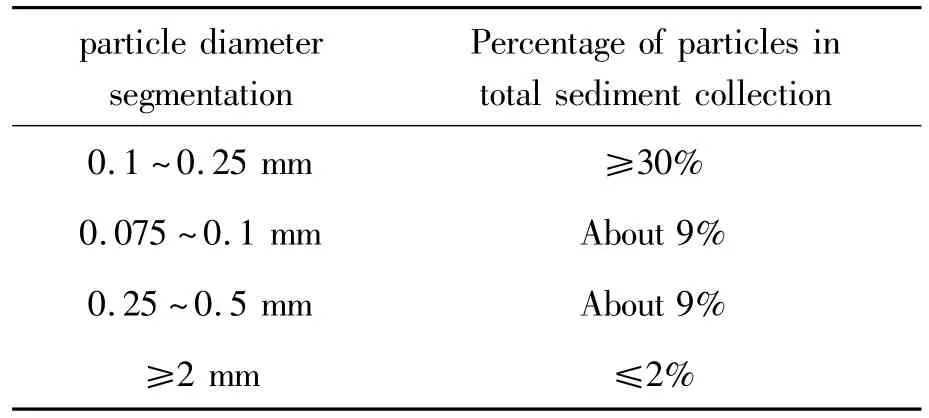
Table 1 Particle distribution interval ratio table
2.3 Meshing
In the process of CFD calculation,the grid division determines the quality of the simulation.The grid is too small and too dense,it will increase the computing time and performance of the computer requirements are too high.If the mesh is too large,the simulation results are not accurate enough.In this example,it is difficult to segment and correlate the blocks on the train head,so the unstructured tetrahedral mesh is used to divide the block and Six layers of expansion are set on the surface of the train as shown in the following figure.

Fig.2 The grids of calculation field
2.4 Discrete phase processing method
The influence of cross-wind with sand on the aerodynamic performance of high-speed trains is simulated by the Euler-Lagrange method.The volume fraction of the discrete phase is less than 10%,which is consistent with the proportion of sand in the local aeolian sand environment.The discrete phase is coupled with single-phase,sand are treated as solid particles,the motion equation of sand in the continuous phase atmosphere[16]is as follows:

In the formula,where v is the sand velocity;μis the air velocity;ρcis the Continuous phase density;ρsis Solid phase density;g is an acceleration of gravity;D is the diameter of sand term;m is sand phase mass;the CDis drag coefficient of sand particles;the Reynolds number of discrete phase is written as:

In the formula,whereμcis molecular viscosity of continuous phase;the separation between particles is provided by the mass of the sand itself.The momentum formula is written as:

3 Results and analysis
3.1 Analysis of flow field characteristics
When the train is running at high speed,the structure of flow field nearby will seriously affect the safety of the train.In a bid to study the flow field structure of trains at different speeds,the streamline on section x=-25 is taken as shown in Fig.3.It can be seen from Fig.3 that the streamline are in a regular state above the train,indicating that the flow field structure above the train is relatively stable,and the farther away from the train,the more stable it is.With the increase of wind speed,the structure of the flow field in the leeward side of the train becomes more and more complex.When the flow field at the leeward side of the train is far away from the train wall,the streamline presents a stable state.No matter how much wind speed is in the wind area,there will be a vortices near the leeward side of the train.With the increase of the wind speed,the vortex position increases.In the area of strong wind and sand,the vortex generated by the leeward side will cause wear and erosion damage to the car body and windows,the greater the wind force,the stronger the damage will be.Besides,sand particles will be deposited in the eddy current position,which will lead to the sand burying characteristics of railway track.Therefore,it is necessary to set up wind and sand walls in strong wind sand areas to ensure the safe operation of the train.
3.2 Body pressure analysis
When the train is running at high speed,the airflow acts on the whole body of the train and causes the pressure change on the train surface.Fig.5 shows the surface pressure nephogram of the train under the action of net wind and sand-laden crosswind at different speeds.

Fig.3 Streamline diagram of X=-25 section
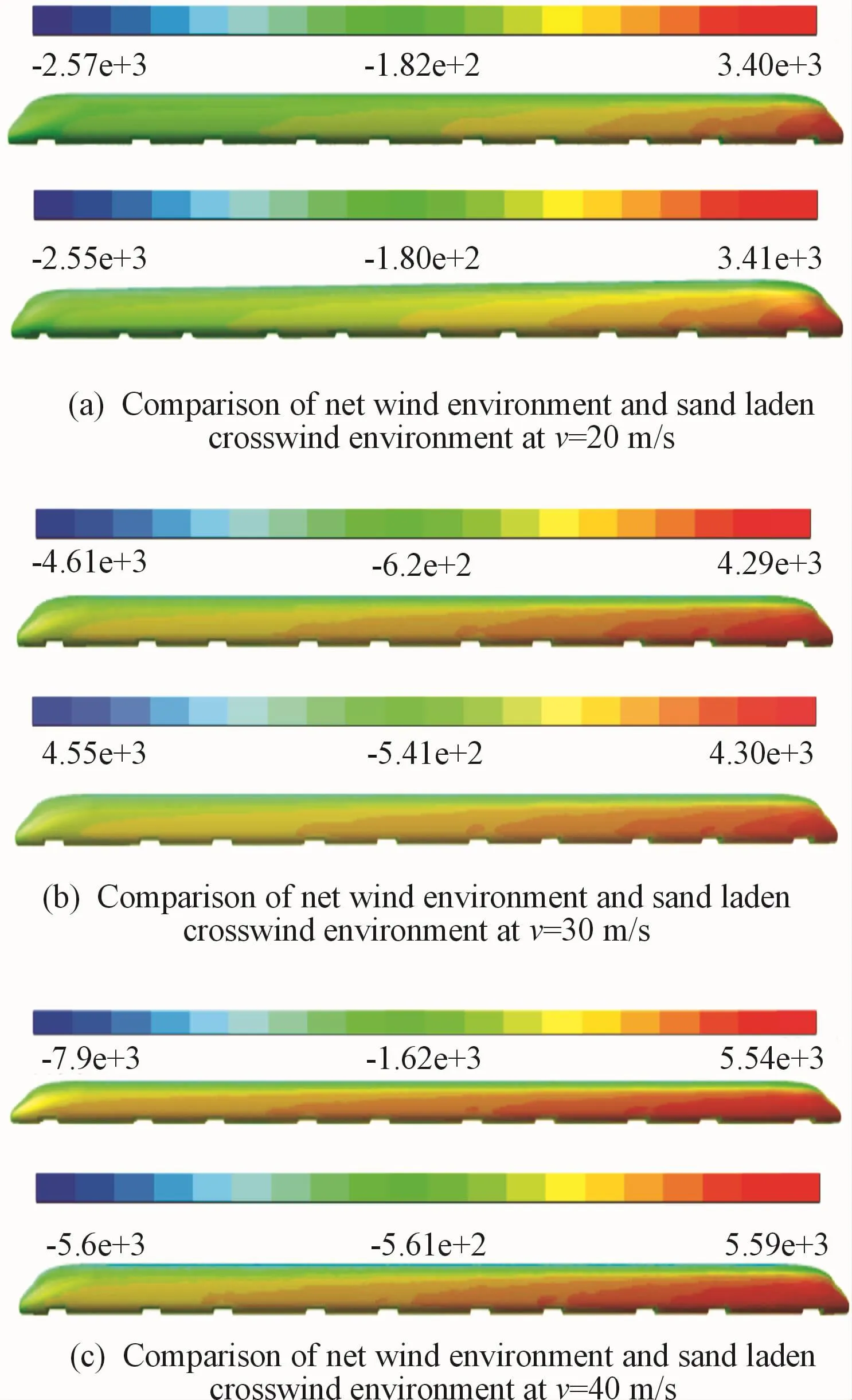
Fig.4 Pressure cloud on the train surface
Compared with driving in the net wind environment,the positive pressure and negative pressure on the surface of the train increase and the amplitude of negative pressure is larger than net wind,which is caused by the instability and specificity of the movement of sand carried by the airflow.At the windward side,the maximum pressure appears at the nose wing of the head car,and the pressure decreases along the train body;With the increase of wind speed,the maximum pressure action surface of the train gradually deviates and increases.The pressure of the train body will increase obviously under the action of sand-laden crosswind.With the increase of sand-laden crosswind speed,the pressure increase is more obvious.When the speed reaches 40 m/s,the pressure difference between the front and rear of the whole train body increases.The increase of body pressure will aggravate a series of safety problems,such as body erosion and the damage of windows.
Fig.5 shows the analysis of the influence of sand diameter on the maximum train pressure under the action of crosswind.The diameter of selected sand is 0.1 mm,0.5 mm and 1 mm.It can be seen from Fig.5(a)that the maximum positive pressure amplitude of the train decreases with the increase of the sand diameter,however,relative to the net wind environment,the maximum pressure of train is less than that of crosswind with sand,and the pressure is the highest when the diameter of sand is 0.1 mm.It can be seen from Fig.5(b),in the net wind environment,the pressure amplitude reaches the maximum.When the crosswind velocity is 20 m/s,the pressure amplitude decreases with the increase of sand particle diameter.When the crosswind velocity is 40 m/s and the diameter of sand is 0.5 mm,the pressure amplitude is the largest.
It can be seen that the amplitude of positive pressure on the train body increases and that of negative pressure decreases under crosswind with sand,and they all increase with the increase of speed.Therefore,under the condition of constant train speed,sand-laden crosswind speed will seriously affect the pressure difference between the front and rear of the body,thus affecting the safety performance of the train.
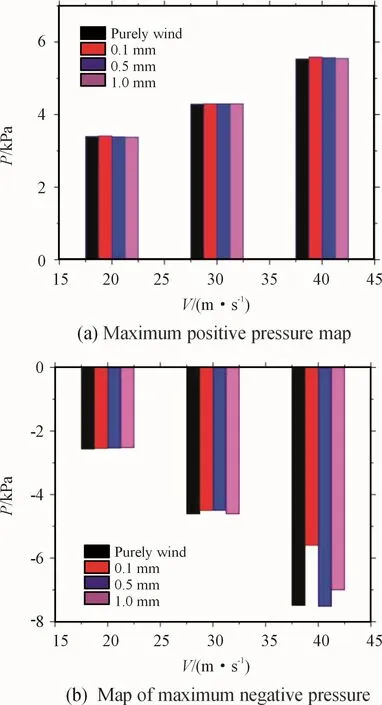
Fig.5 Maximum positive and negative pressure diagram of high-speed train
3.3 Analysis of lift,drag and lateral force
During the running of the high-speed trains,the friction force and viscous force of air and sand particles on the train produce drag,lift and lateral force.The running speed of the high-speed train is 200 km/h,and the diameter of sand is 0.1 mm.and the force on the joint are shown in Fig.6.In Fig.6(a)drag diagram,when the wind speed is20 m/s,In the case of sand-laden crosswind,the drag of each section of the train is greater than that under the condition of clean wind,and the drag of the head car of the train is the largest,which is12 times of the drag of the rear body.With the increase of wind speed,the drag of the train in the wind and sand decreases,but when the speed is 40 m/s,the drag amplitude of the tail car decreases to the maximum.In Fig.6(c),the lateral force of the train under crosswind with sand is greater than that under clean wind condition.With the increase of wind speed,the lateral force of the train is increasing,and the lateral force at the head car is the largest and that of the tail car is the minimum.The maximum lateral force with wind and sand is1.2 times of that the cleanwind.In Fig.6(e)lifting diagram,when the wind speed is 20 m/s,the amplitude difference of lift force of each section of the train is the smallest under the condition of clean wind,with the increase of wind speed,the difference of lift amplitude becomes more and more obvious.When the wind speed is less than 30 m/s,the lift force of the first car and the middle car 1 is almost the same,when the wind speed is greater than 30 m/s,the lift force at the front vehicle is the largest and decreases in turn.
The total lift,lateral force and drag of the train will also seriously affect the safety of train operation.Fig.6(b)shows the total drag of the train.It can be seen from the figure that the drag increases with the increase of wind speed.With the increase of particle diameter,the drug becomes larger and larger,but the maximum drag value is less than the net wind condition.In Fig.6(d),the lateral force increases with the increase of wind speed,at the same speed,with the increase of sand diameter,the lateral force decreases gradually,but the minimum value is greater than that under net wind environment.In Fig.6(f),when the wind speed is 20 m/s,the particle diameter has little effect on the life force of the train and the particle diameter has a greater impact on the lift when the wind speed increase
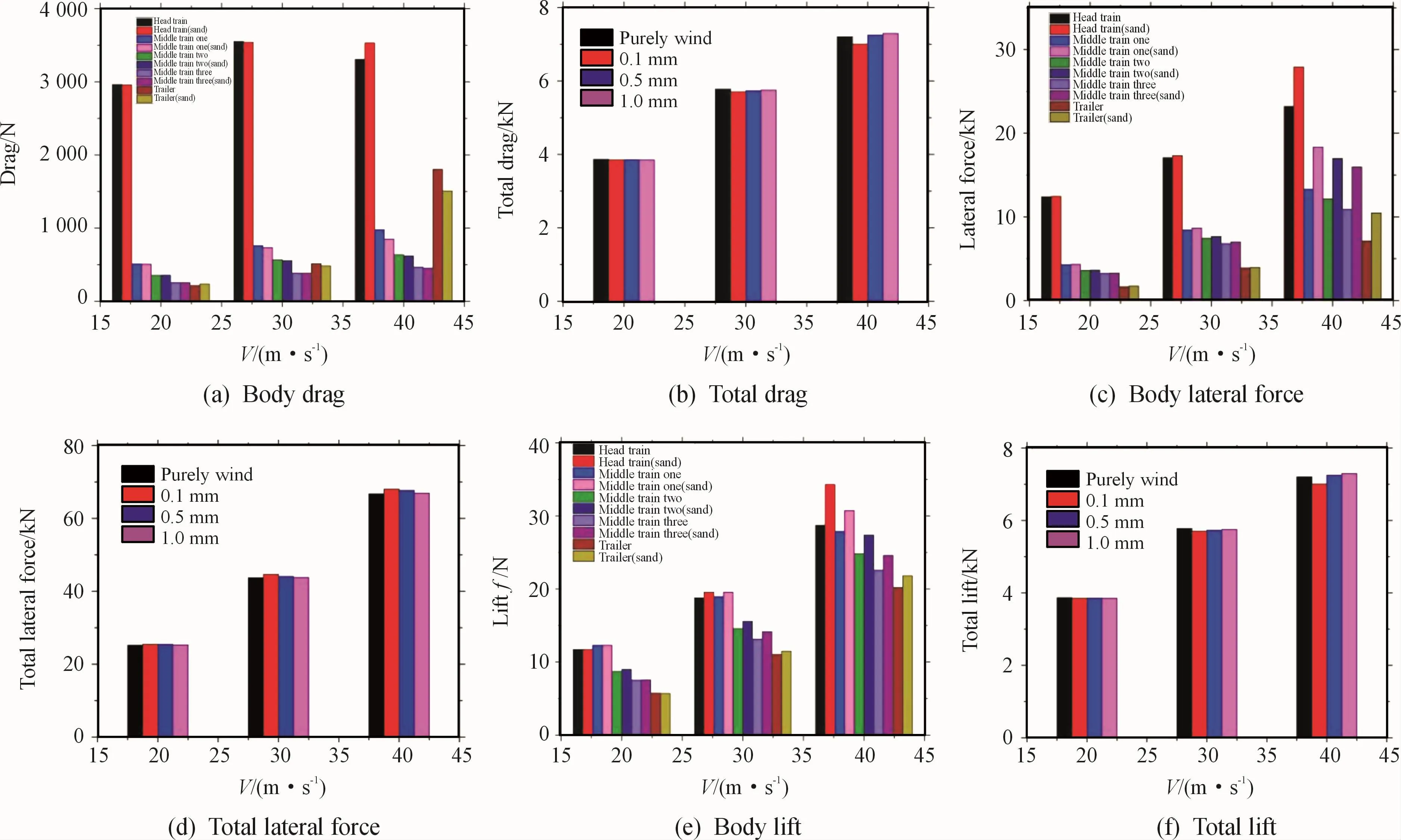
Fig.6 The drag,lateral force and lift diagram of each part and Total drag,lateral force and lift diagram
Comparing the calculation results of this example with other literature,we can see that[17],under the condition of crosswind with sand,the drag,lateral force and lift force of train will increase obviously.Therefore,the safety of trains running in strong wind and sand environments will be greatly reduced.
3.4 Analysis of overturning moment
The overturning moment is an important indicator of safe train operation,as shown in Fig.7.With the increase of crosswind speed,the overturning moment of the train is increasing,When the wind speed is 20 m/s,the overturning moment of the train in a crosswind with sand is slightly larger than that under the net wind.The overturning moment decreases with the increase of sand particle diameter,but it is larger than that in net wind.With the increase of wind speed,the amplitude of the overturning moment increases obviously but decreases with the increase of sand diameter.
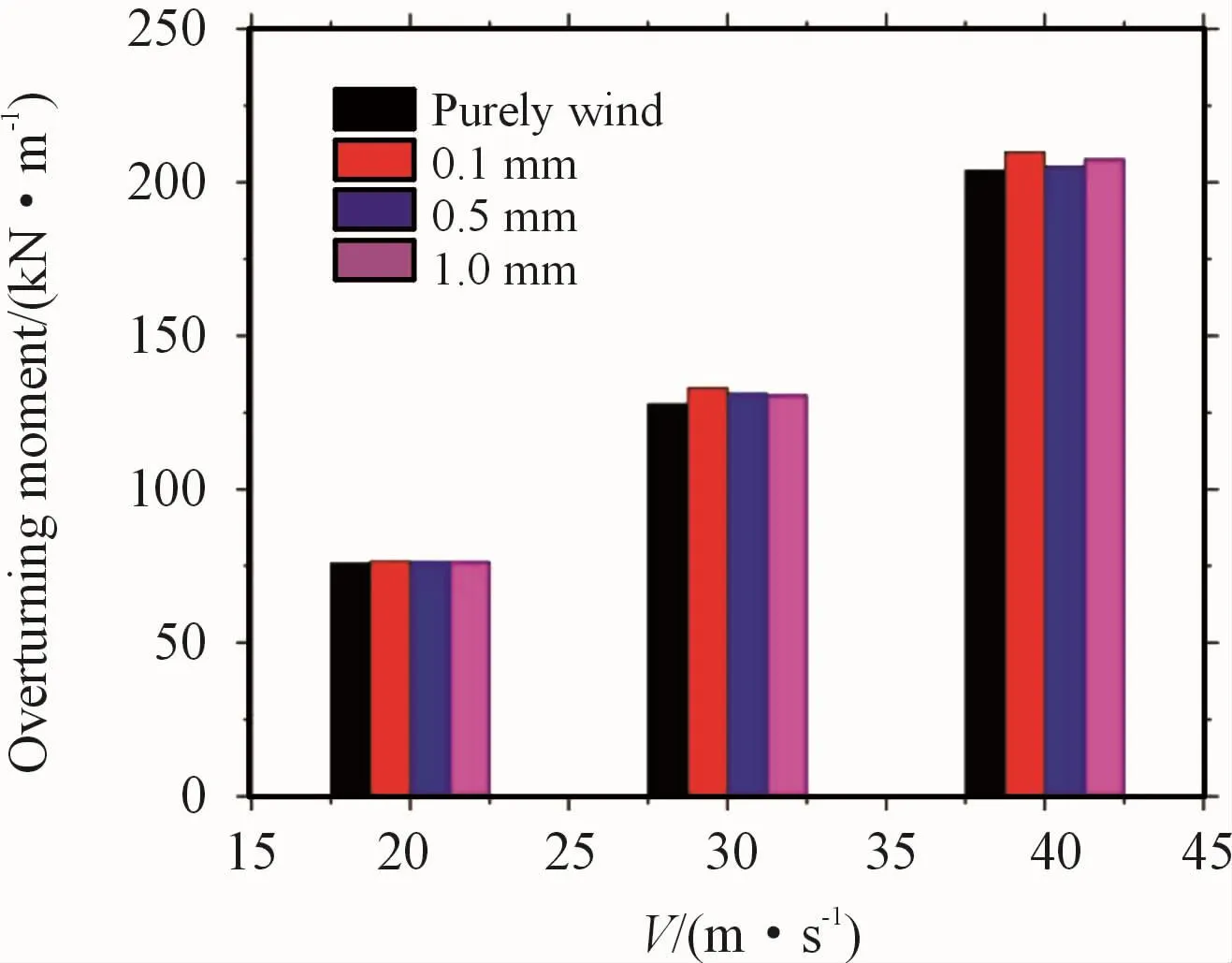
Fig.7 Overturning moment diagram
It can be seen from Table 2,at the same velocity,the increased rate of overturning moment decreases with the increase of sand diameter;when the sand diameter is the same,the growth rate increases first and then decreases with the increase of wind speed.When the wind speed is 40 m/s and the sand particle size is 0.1 mm,the overturning moment increases obviously,and the maximum value is 2.74 times of the wind speed of 20 m/s under the same particle size.Under the condition of constant wind speed,the overturning moment reaches the maximum value when the sand diameter is0.1 mm.Because the sand is small,the momentum changes little when passing through the train body,the cumulative effect of this collision increases in the overturning moment.
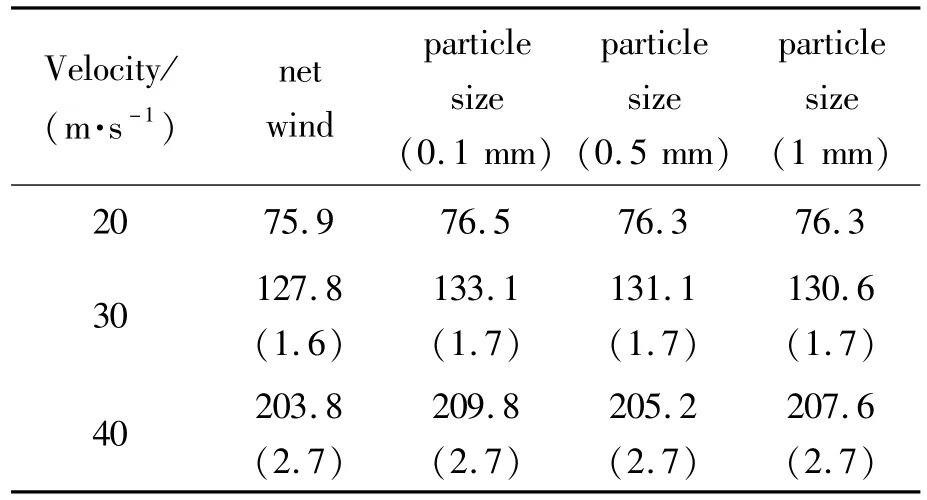
Table 2 Overturning moment and its growth rate of trains at different speeds and sand particle diameters
4 Conclusions
In this paper,the aerodynamic performance of the train under both different crosswind conditions and different sand particle diameters is analyzed through numerical simulation,the conclusions are as follows:
1)When the train is running at high speed,there will be vortices on the leeward side of the train,with the increase of velocity,the vortex will decrease,at the same time,the streamline near the ground on the leeward side of the train will become more and more irregular.The vortex on the leeward side of the train is the main cause of sand deposition on the railway track.
2)In the crosswind environment with sand,the pressure on the train surface is greater than that under the condition of clean wind.With the growing of the speed,the growth rate of the positive pressure on the train surface is 20.7%and 29.1%respectively;With the increase of particle diameter,the positive pressure on the train surface increases and the negative pressure decreases.Compared with the clean wind,the strong crosswind with sand has more influence on the wear and erosion of the train body.
3)With the increase of wind-speed,the drag,lift and lateral force of each carriage of the train are increasing,and the maximum force appears at the front of the train and the force on the tail is the smallest.In the wind and sand environment,the drag of each carriage of the train is reduced,and the side force and lift is greater than that in the environment without wind and sand.The maximum sand lift is 1.19 times that of no sand.
4)The overturning moment of the train increases with increase of wind speed and decreases with the increase of sand diameter.The maximum overturning moment is 1.007 times of the minimum when the wind speed is 20 m/s,2.76 times of the maximum overturning moment when the wind speed is20 m/s,and the increase rate of overturning moment is 1.6%-2.7%.High-speed trains in strong wind and sand environments are prone to overturn and other safety problems.
- 机床与液压的其它文章
- Lubricating performance of conical spindle distribution in the ball piston pump
- Mechanism analysis and control of asymmetrical digital cylinder
- Reliability analysis and calculationof the drive hydraulic system group of combined transportation
- Reliability analysis for cutterhead hydraulic drive system of remanufactured shield machine
- Application of compound buffer hydraulic cylinder in electro-hydraulic load simulator(EHLS)
- Start-up characteristics of a new electro hydrostatic actuator with an accumulator

